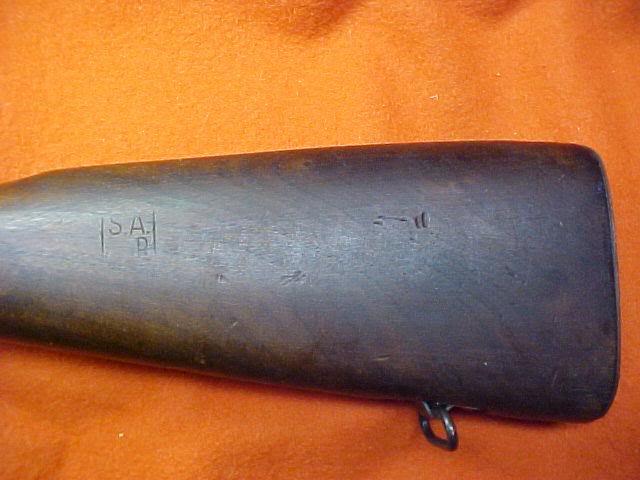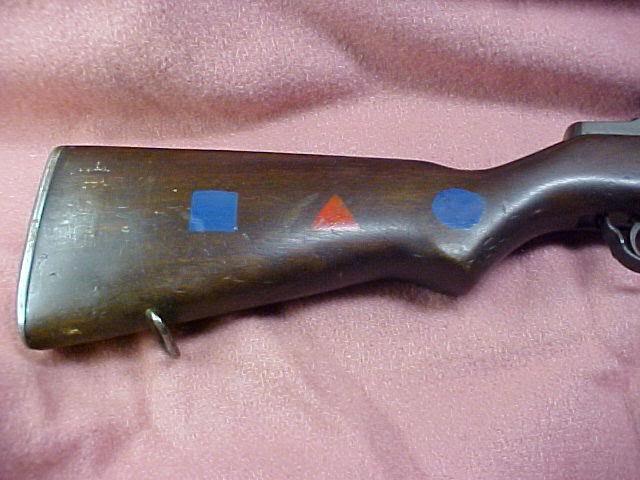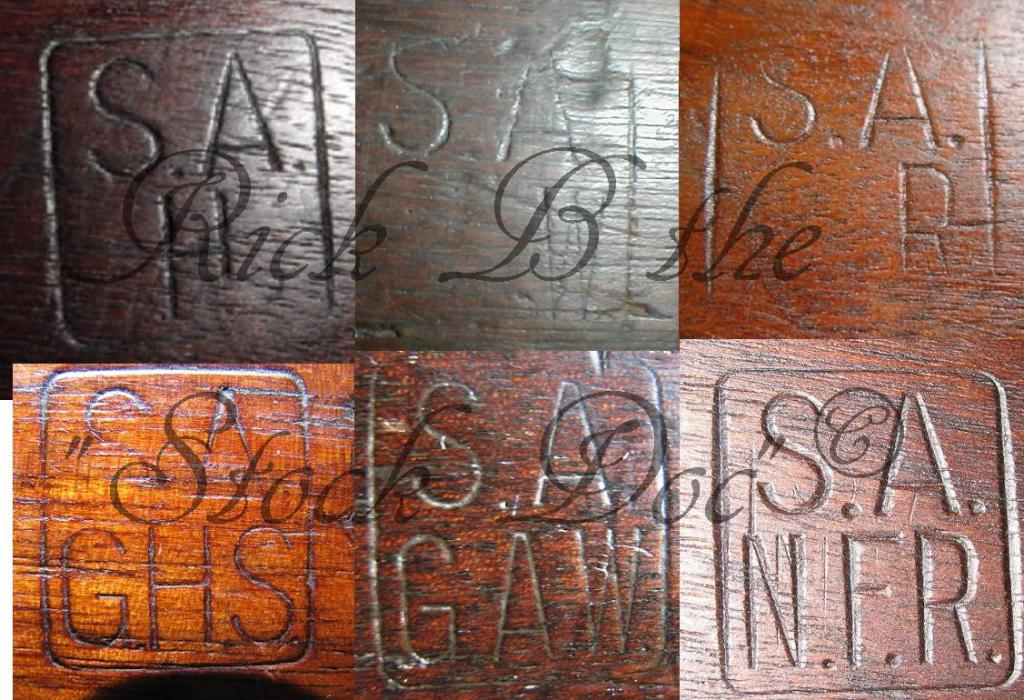-
Legacy Member

1st WWII Garand questions?
June 1943 with June 1943 barrel. I coatailed this one on my previous first Garand post but did not get any input on a couple of questions. Has anyone seen a rack number like this (hard to tell in the photo but the numbers are glitter lined in black)? Any opinions on the vintage of the stock markings and their meaning? Vintage of the gas cylinder? Meaning of the markings unde the reciever, heat lot?
post but did not get any input on a couple of questions. Has anyone seen a rack number like this (hard to tell in the photo but the numbers are glitter lined in black)? Any opinions on the vintage of the stock markings and their meaning? Vintage of the gas cylinder? Meaning of the markings unde the reciever, heat lot?
Information
 |
Warning: This is a relatively older thread
This discussion is older than 360 days. Some information contained in it may no longer be current. |
|
-
-
12-09-2014 07:00 PM
# ADS
Friends and Sponsors

-
Legacy Member

I believe that the gas cylinder is a Korean War era IHC.
The rack numbers on the stock are called "decals". In the 1950's & 1960's, you'd buy them in sheets with various sizes of letters & numbers, & peel them off. I've never seen them used for rack numbers, as paint/stencils were in use at the same time. The purpose of rack numbers is to allow the person in charge of the armory to look down the rows of rifles, & quickly determine that 1) all the rifles are there, 2) all the rifles are assigned to you, & 3) all of the rifles are in their correct place. If you have 200 rifles to account for, that's a lot faster than checking the SN's against a list.
Generally, rifles rebuilt at Springfield Armory from WW2 - ? were stamped with a boxed S.A./R. It looks like yours has a separate H, which I can't explain.

-
Thank You to Neal Myers For This Useful Post:
-
Legacy Member

The stock cartouche indicates the stock was on a rifle overhauled at Springfield Arsenal in the post WW2 period. Late 1940's. very early 1950's. Never did see a rack number like that. How about the sight base on the gas cylinder, wide or narrow ??
-
Thank You to Joe W For This Useful Post:
-
Advisory Panel


There has always been speculation that many of the SA single letter stamps were WWII cartouche dies with letters ground off. SA/R could have been NFR with the NF removed, and the SA/H could have been GHS with G and S ground. Note that the position of the remaining letter corresponds to what it would have been on the original, left, right, or center. Others don't fit the theory like SA/O.
Real men measure once and cut.
-
The Following 2 Members Say Thank You to Bob Seijas For This Useful Post:
-
Legacy Member

The decals are shelacked on the comb of the stock not the usual location. I just wanted to be certain there was no special significance before I removed them. The S.A. H seems to be a bit of a mystery. The H does appear to have been applied in a seperate operation.
-
-
Legacy Member

I'd like to remove the painted rack "markings" on this April 1945 rifle, but am reluctant to do so because it would likely leave a light color under them.

Once you start stock cleaning, it's hard to stop. If you do the entire stock, & it's got a lot of dirt & oil imbedded, it looks a lot worse at the ends where it has soaked in.
Neal
-
-
Legacy Member

Thats character.Much better than gold leaf stickers. I have had good luck with denatured alcohol on varnish. Murphys oil soap seems to clean without stripping the reddish tint of aged linseed oil finish.
finish.
JOEW: I will take and post those measurments.
-
-
There has always been speculation that many of the SA single letter stamps were WWII cartouche dies with letters ground off. SA/R could have been NFR with the NF removed, and the SA/H could have been GHS with G and S ground. Note that the position of the remaining letter corresponds to what it would have been on the original, left, right, or center. Others don't fit the theory like SA/O.
Not speculation,  it is fact that the SA over R on the right is the NFR stamp. The SA over H is the GHS stamp and the SA over W on the right was the GAW stamp. Rick B
it is fact that the SA over R on the right is the NFR stamp. The SA over H is the GHS stamp and the SA over W on the right was the GAW stamp. Rick B

-
post but did not get any input on a couple of questions. Has anyone seen a rack number like this (hard to tell in the photo but the numbers are glitter lined in black)? Any opinions on the vintage of the stock markings and their meaning? Vintage of the gas cylinder? Meaning of the markings unde the reciever, heat lot?
Information














 PM
PM











 it is fact that the SA over R on the right is the NFR stamp. The SA over H is the GHS stamp and the SA over W on the right was the GAW stamp.
it is fact that the SA over R on the right is the NFR stamp. The SA over H is the GHS stamp and the SA over W on the right was the GAW stamp. 

